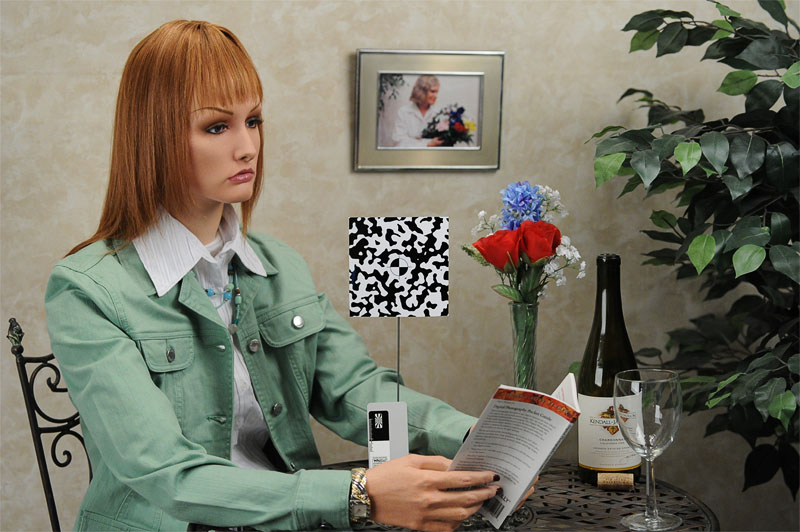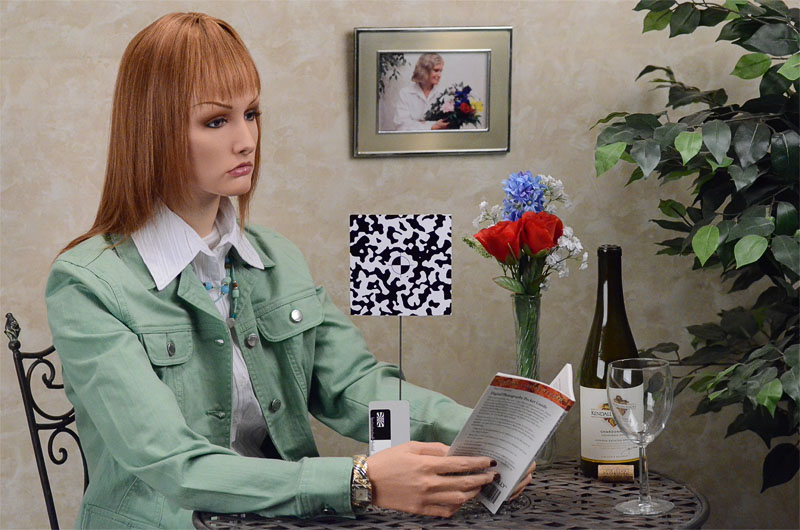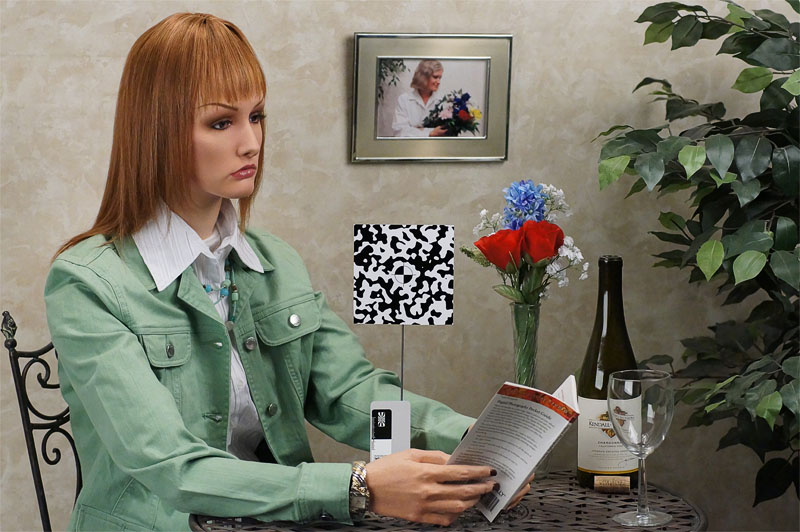Well … big … maybe not great. Anyway, lots of discussion lately about how the Pentax Q measured so well on DXOMark and how the 5N has the best jpeg engine ever and so on.
This test takes one of my favorite sets of images – imaging-resource.com jpegs at 6400 ISO in low light – and compares images at web size and then with full sized crops normalized to the Nikon D7000’s 16mp, which is 4928px across, or good for a print at 300ppi of 16 inches across. Of course, that is trivial to extend to cover to 18 inches.
Now, the crops are actually the equivalent to looking at a 49” print at 20 inches, which is an unrealistic magnification, but think of it as a contest and the judges are peering in at the images to see the lovely hair details. What will they see?
I’ll show an 800px rendering of each and explain what I think I see. You will have either better or worse eyes than I do and you will have different tastes from mine, so you need to judge for yourself.
Let’s start with the reference image from the D3s:
Click the image to see the 800px version. Very nice image. The hair retains a very nice texture and the image is well saturated. The reds of the tulips are nicely saturated and yet retain a lot of detail. Excellent performance for 6400 ISO in jpeg.
Now the D7000, which of course is the new little brother to the D700 and which caused me to sell my full frame camera due to the 7000’s excellent image quality all the way up to 6400.
Some loss of saturation but otherwise very similar. Excellent tulips again and excellent hair detail.
Now the Sony NEX5N, which some tout as being the best jpeg engine out there. I admitted to that in my last post on the topic yet looking more closely at the DPReview comparator has me changing my mind. The Sony seems to have a fair bit of smoothing and smearing and I really don’t like that. But it is really good at retaining details that have edges. So let’s see the small version:
At these sizes, the image is a near match for the D3s, so good on Sony. The tulips’ red coloring is intact and so is the detail in the reds. The hair is very detailed and overall the saturation is higher than the D7000, and close to the D3s.
So how about the much-vaunted jpeg engine in the X100?
Another very good performance. The saturation is a tad lower than the D3s and NEX5N, and the tulips have lost some of the 3-dimensionality of the reds. A slight over saturation appears to have happened there. But overall a very nice image.
So now we move into the smaller sensors. We’ll start with what I think is still the best sensor / jpeg engine combination I’ve seen in u4/3 sensors – the Panasonic GH2.
The image is definitely too dark, and seems somewhat oversaturated. But the reds retains good details at this size and so does the hair. Pretty close to the APS-C sensors at this size, so no real complaints. I would, of course, increase the brightness of the image by lifting a curve in the mid tones.
Next we see the Nikon V1, the first 1” sensor (2.7x crop factor) to hit the market that I know of. A real rarity.
A fairly strong loss of contrast, as might be expected on such a small sensor. But the hair retains an awful lot of detail for such high ISO and the reds in the tulips, while less saturated than the best images, still show good 3-dimensionality. At web sizes, it appears that the V1 is useable … wow.
Next we get the Canon S100, which has a sensor fairly close to the largest commonly used these days. This one is 1/1.7” … we should see a pretty strong drop in image quality by now, as we are past the sensor size threshold at which 6400 ISO makes any sense.
So yes, the drop is substantial Opening the 800px version already shows a lot of clumping in the hair. In fact, it looks like it was slicked with oil. But there is decent saturation (cranked in the jpeg engine of course) and the tulips, while a bit less saturated, still look good.
And finally … the Pentax Q. It measured really well on DXOMark, above the S100, so let’s see what that means.
Apparently, it means very little. I posted on the Fuji forum today that I thought the “smoothed” designation for the Pentax Q’s SNR plot would end up showing up as heavily smoothed imagery. And I was definitely right about that. This is, after all, a 1/2.3” sensor, the smallest sensor generally used in cameras outside of cell phones.
So we see a real oil slick on top of the head, but the tulips are still tulips at this size, so all is not lost. This is a usable memory, but it would not print well at all.
So a closer look now. The crops are what you would see if you printed at 49” wide and looked at it from 20”. Pretty much like a competition for large prints. The actual pixel count shown is normalized to the 16mp of the D7000 and would make an excellent 16” print at 300ppi.

Hmmm … the D3s looks great. A bit more saturation than needed, but otherwise near perfect. The hair has almost no clumping and the eye looks crisp.
After that we have the APS-C cameras dominating easily. It is a toss up which is best depending on what you personally value, but I’ll take a swing based on my preferences:
- X100 and D7000 with X100 edging out a victory because of very smooth skin … but not too smooth. I do prefer the hair detail on the Nikon, but I’ll let the wookie (skin) win on this one. Well done Fuji … if only they could build hardware that matches their magnificent jpeg engines.
- NEX5N looks great, but the smoothing and clumping is brutally obvious. This is what I have started to notice in the DPReview comparator as well. It destroys the illusion of 3-dimensionality when it gets out of hand. Fuji and Nikon are definitely a cut above when larger prints matter.
- The rest just stink at 6400 ISO. No point in analyzing them as they are blurred beyond recognition. However, it is worth noting that the Q is easily the worst of them all, so the laws of physics have not been denied as DXOMark would have us believe. The estimated the results without smoothing, but the camera smooths, so I see no point in that methodology.
Bottom line … if you want to shoot in a fairly dark room (several lights and bright enough to get to 1/50s at 1600 ISO) then you can get really good shutter speeds at higher ISO with APS-C cameras. Nothing else will really cut it in bad light.
Of course, I know that the GH2 is superb at 1600 ISO, so you could take the shutter speed hit and get some good images. But I’m inclined to use the right tool, and that starts at APS-C (as it always has for low light with humans.)







